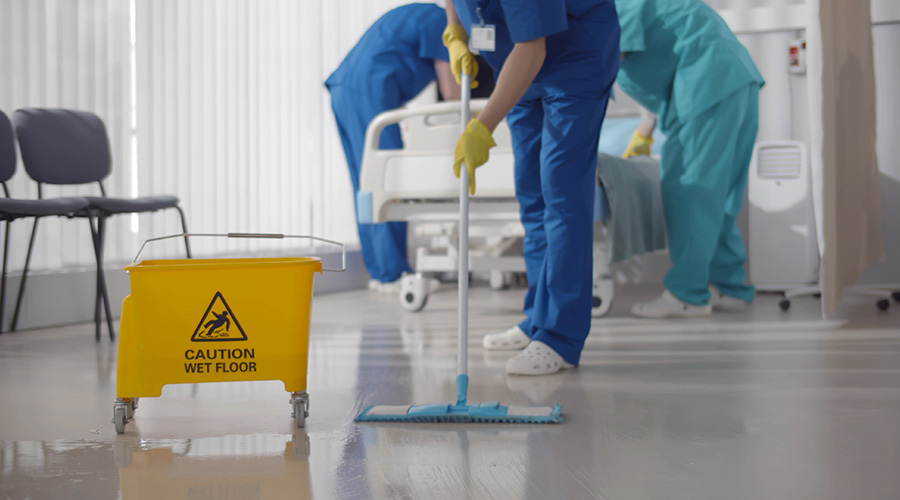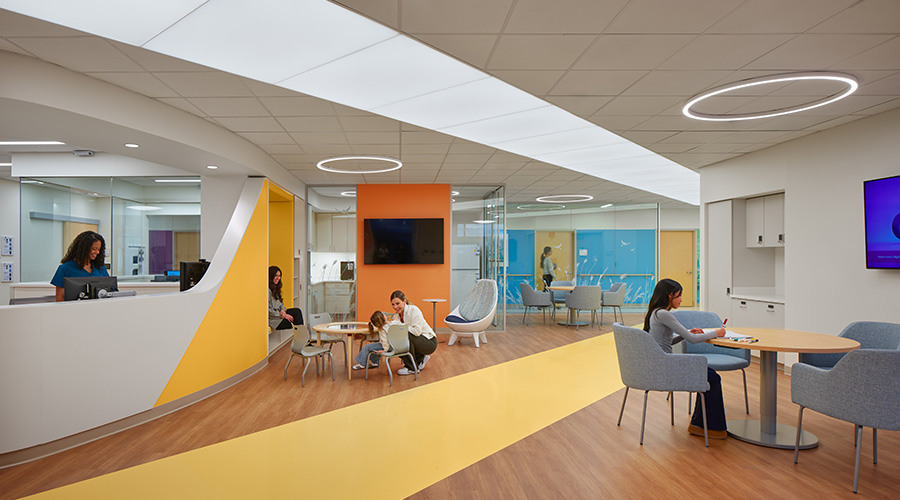With sanitized environments, hygiene and sustainability become increasingly important factors. Stainless steel continues to be the material of choice for commercial sink applications, especially in healthcare, assisted living, hospitality and general use environments.
It long has been known that stainless steel surfaces are easier to clean than alternative materials, such as solid surface. While the cleanability of stainless steel, nickel- and copper-based alloys has been found to be similar, the efficiency of cleaners on stainless steel is three to four times greater than on polymers or aluminum. Stainless steel surfaces have greater cleanability and require lower concentrations of disinfectant to achieve the level of hygiene required. The hard metallic surface of stainless steel makes it difficult for bacteria to adhere and survive. When properly cleaned and maintained, stainless steel surfaces reduce bioburden that can cause disease and infection.
Stainless steel is more heat resistant and scratch resistant than alternative materials and solid surfaces, so there is no scaling or permanent damage that can easily turn into a breeding ground for pathogens and microorganisms.
The corrosion resistance and other useful properties of Type 304 and Type 316 stainless steel are enhanced by increased chromium content and the addition of other elements such as molybdenum and nickel. Nickel also gives stainless steel a lustrous and brighter appearance which is less gray than steel that has no nickel.
Type 304 is the basic chromium-nickel austenitic stainless steel and has been found suitable for the widest range of applications in all kinds of products and architectural work.
Stainless steel strengths are evident especially from the lifecycle point of view. Stainless steel is not consumed; it remains part of the sustainable closed-loop system. Unlike many other engineered materials and solid surfaces, stainless steel is recycled without any degradation. Specifiers have become increasingly aware that truly sustainable materials should not only meet the intended design life requirements but should also be recaptured at the end-of-life (EOL) and either reused or recycled into new high quality products.
When the total life cycle costs are considered, stainless steel is often the best value option for healing environments.
For more information, visit www.justmfg.com.

 Contaminants Under Foot: A Closer Look at Patient Room Floors
Contaminants Under Foot: A Closer Look at Patient Room Floors Power Outages Largely Driven by Extreme Weather Events
Power Outages Largely Driven by Extreme Weather Events Nemours Children's Health Opens New Moseley Foundation Institute Hospital
Nemours Children's Health Opens New Moseley Foundation Institute Hospital Code Compliance Isn't Enough for Healthcare Resilience
Code Compliance Isn't Enough for Healthcare Resilience Ribbon Cutting Marks First Phase Completion for New Montefiore Einstein Facility
Ribbon Cutting Marks First Phase Completion for New Montefiore Einstein Facility